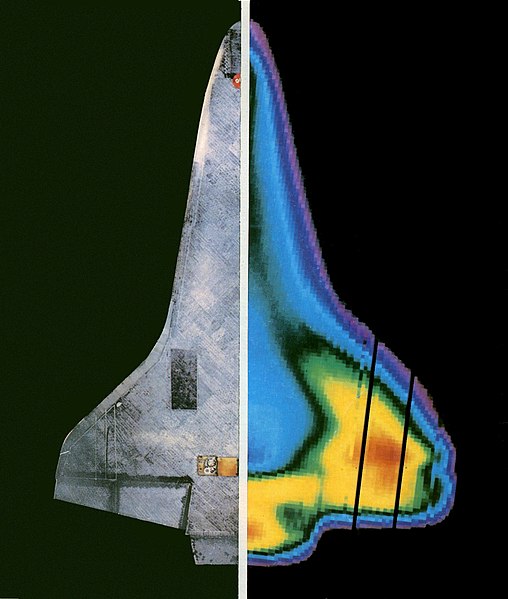Rendezvous pitch maneuver
The R-bar pitch maneuver (RPM), popularly called the rendezvous pitch maneuver or backflip, was a maneuver performed by the Space Shuttle as it rendezvoused with the International Space Station (ISS) prior to docking. The Shuttle performed a backflip that exposed its heat-shield to the crew of the ISS that made photographs of it. Based on the information gathered during the rendezvous pitch maneuver, the mission team could decide that the orbiter was not safe for re-entry. They may have then decided either to wait on the ISS for a rescue mission or attempt extra-vehicular activity to repair the heat shield and secure the safe re-entry of the orbiter. This was a standard procedure recommended by CAIB for all space shuttles docking to the International Space Station after a damaged heat shield caused the Columbia disaster.
The Space Shuttle Discovery performing the rendezvous pitch maneuver during STS-114.
Underside view of Atlantis during STS-117, as it approached the International Space Station and performed a Rendezvous Pitch Maneuver.
Space Shuttle thermal protection system
The Space Shuttle thermal protection system (TPS) is the barrier that protected the Space Shuttle Orbiter during the searing 1,650 °C (3,000 °F) heat of atmospheric reentry. A secondary goal was to protect from the heat and cold of space while in orbit.
The Kuiper Airborne Observatory took an infrared image of the underside of Columbia during the reentry of STS-3 to study temperatures. The orbiter was 56 kilometers (184,000 ft) high and travelling at Mach 15.6.
Space Shuttle Discovery as it approaches the International Space Station during the STS-114 on 28 July 2005.
Endeavour in the California Science Center museum, showing tiles near door
Discovery's under wing surfaces are protected by thousands of High-Temperature Reusable Insulation tiles.





